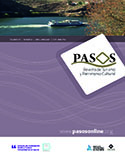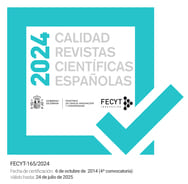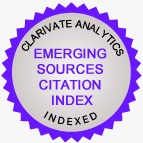Salary behavior by gender in Mexican tourist nodes
DOI:
https://doi.org/10.25145/j.pasos.2021.19.020Keywords:
wage behaviour, wage discrimination, the Mincer model, Oaxaca – Blinder breakdown, tourist nodes of MexicoAbstract
The present piece of research work was designed to examine wage differences and gender discrimination in the nodes of the tourist regions of Mexico over the last two decades, using Mincer's model of Wages and the detailed breakdown of Oaxaca-Blinder. This research was carried out in 8 Mexican tourist nodes. The study variables were gender, income per hour, years of schooling and experience. Multiple linear regressions were used to carry out the econometric analyses. Evidence of wage discrimination against women was found in all the tourist nodes, ranging between 0.43 and 1.57. The lowest level of wage discrimination is experienced in Los Cabos, Baja California Sur and the highest in Ciudad Juárez, Chihuahua.
Downloads
Publication Facts
Reviewer profiles N/A
Author statements
- Academic society
- PASOS. Revista de Turismo y Patrimonio Cultural
- Publisher
- Instituto Universitario de Investigación Social y Turismo. Universidad de La Laguna (España) - Instituto Universitario da Maia ISMAI (Portugal)
References
Altés, C. 2008. Turismo y desarrollo en México, nota sectorial. México: Banco Interamericano para el Desarrollo.
Arceo-Gómez, E. & Campos-Vázquez, R. 2013. Evolución de la Brecha Salarial de Género en México. México: CIDE
Bakas, F., Costa, C., Breda, Z. & Durão, M. 2018. A critical approach to the gender wage gap in tourism labor. En Tourism, Culture & Communication, 18, 35-49. DOI: https://doi.org/10.3727/109830418X15180180585167
Baylina Ferré, M. 2004. Metodología para el estudio de las mujeres y la sociedad rural. En Estudios Geográficos, LXV, 254, 5-28. DOI: https://doi.org/10.3989/egeogr.2004.i254.190
Baylina, M., Villarino, M., García Ramos, M. D., Mosteiro, M. J., Porto A. M & Salamaña, I. 2019. Género e innovación en los nuevos procesos de re-ruralización en España. En Finisterra, LIV (110), 75-91. DOI: 10.18055/finis16053
Bunzel, H. 2008. Mincer Model. Disponible en: http://www2.econ.iastate.edu/classes/econ671/bunzel/Fall2008/Mincerbeam.pdf.
Bustelo M. & Vezza E. 2019. Brechas de género en las habilidades para el siglo XXI. En Mateo Díaz, M. & Rucci, G. El futuro ya está aquí: Habilidades transversales en América Latina y el Caribe en el Siglo XXI (pp. 82-106). Banco Interamericano de Desarrollo.
Cardozo, D. L., Fogel, K. M., Molinas, L. R. & Rabito, M. R. 2005. Efectos de la educación en los ingresos: una exploración de la teoría de Mincer aplicada a la realidad paraguaya. En Población y Desarrollo. Disponible en: https://dialnet.unirioja.es/servlet/articulo?codigo=5654300
Carosio, A. 2012. Feminismo y cambio social en América Latina y el Caribe. Buenos Aires: Clacso.
Díaz Carrión, I. A. 2010. Ecoturismo comunitario y género en la reserva de la biosfera de Los Tuxtlas, México. En PASOS Revista de Turismo y Patrimonio Cultural, 8, 15-165. Disponible en: www.pasosonline.org
Díaz Carrión, I. A. 2012. Turismo de aventura y participación de las mujeres en Jalcomulco, México. En PASOS Revista de Turismo y Patrimonio Cultural, 10, 531-542. DOI: https://doi.org/10.25145/j.pasos.2012.10.068
Díaz-Carrión, I. A. 2013. Mujeres y mercado de trabajo del turismo alternativo en Veracruz. En Economía, Sociedad y Territorio, 13 (42), 351-380. Disponible en: http://www.scielo.org.mx/scielo.php?script=sci_arttext&pid=S1405-84212013000200004
INEGI. 2019. Encuesta Nacional de Ocupación y Empleo del Instituto Nacional de Estadística, Geografía e Informática. Disponible en: https://www.inegi.org.mx/programas/enoe/15ymas/
Ferreira, C. R. & silva, J. R. 2016. Pay gap by gender in the tourism industry of Brazil. En Tourism Management, 52, 440 – 450. DOI: http://dx.doi.org/10.1016/j.tourman.2015.07.003
Galassi, G. L. & Andrada, M. J. 2006. La relación entre educación e ingresos: ecuaciones de mincer por regiones geográficas de Argentina para el año 2006. En X Jornadas Argentinas de Estudios de Población. Disponible en: https://www.aacademica.org/000-058/48.pdf
García-Ramón, M. D., Cànoves, G., Salamaña, I., Valdovinos, N. & Villarino, M. 1995. Trabajo de la mujer, turismo rural y percepción del entorno: una comparación entre Cataluña y Galicia. En Agricultura y Sociedad, 75, 115-152. Disponible en:
Gujarati, D. & Porter, D. 2010. Econometría. México: McGraw Hill.
Ibánez, R. M. & Cabrera, C. 2011. Teoría general del turismo: un enfoque global y nacional. México: Serie didáctica.
INMUJERES. 2016. Brecha salarial de género en México. Disponible en: http://cedoc.inmujeres.gob.mx/documentos_download/101271.pdf
Jabbaz, M., Samper – Gras, T. & Díaz, C. 2018. La brecha salarial de género en las instituciones científicas. Estudio de caso. En Convergencia, revista de ciencias sociales, 80, 1-27. DOI: https://doi.org/ 10.29101/crcs.v26i80.11248
Lillo-Bañuls, A. & Casado-Díaz, J. M. 2010. Rewards to education in the tourism sector: one step ahead. En Tourism Economics, 16 (1), 11-23. DOI: https://doi.org/10.5367/000000010790872033
Mota, V. E. 2017. Las regiones turísticas de México. México: editorial y distribuidora académica libertad mexicana, S. A. de C. V.
Muñoz-Bullón, F. 2009. The gap between male and female pay in the Spanish tourism industry. En Tourism Management, 30, 638-649. DOI: 10.1016/j.tourman.2008.11.007
Navarro, J. L. 2011. El comportamiento de los perfiles de edad – ingreso y educación – ingreso según género en Cartagena en 1999. En Revista Panorama Económico, 19, 5. Disponible en: https://www.researchgate.net/publication/324091900_Comportamiento_de_los_perfiles_de_edad-ingreso_y_educacion-ingreso_segun_genero_en_Cartagena_en_1999
Olmos, L. & García, R. 2016. Estructura del mercado turístico. España: Ediciones Paraninfo.
Rivera, M. 2018. Turismo, brecha salarial y desigualdades laborales de género en espacios rurales de Andalucía (España). En Cuadernos Geográficos, 57 (3), 291 – 312. DOI: http://dx.doi.org/10.30827/cuadgeo.v57i3.6459
Sallé, M. A. & Molpeceres, L. 2010. La brecha salarial: realidades y desafíos. Las desigualdades salariales entre mujeres y hombres España 2009. España: Ministerio de igualdad, colección economía, mujer, empresa.
Santos, L. D. & Varejão, J. 2007. Employment, pay and discrimination in the tourism industry. En Tourism Economics, 13 (2), 225 – 240. DOI: 10.5367/000000007780823186
Secretaría de Gobernación. 2019. Igualdad entre mujeres y hombres. Disponible en: https://www.gob.mx/sre/acciones-y-programas/igualdad-entre-mujeres-y-hombres
Secretaría de Turismo. 2019. Ranking mundial del turismo internacional. Disponible en: https://www.datatur.sectur.gob.mx/SitePages/RankingOMT.aspx
Skalpe, O. 2007. The CEO gender pay gap in the tourism industry – Evidence from Norway. En Tourism Managment, 28, 845 – 853. DOI: 10.1016/j.tourman.2006.06.005
United Nations Worlds Tourism Organization. 2011. Global report on women in Tourism 2010. Madrid: UNWTO.
Vicéns, J. 2012. Descomposición Oaxaca – Blinder en modelos lineales y no lineales. Madrid: Instituto L. R. Klein, Universidad Autónoma de Madrid. Disponible en: https://docplayer.es/56307450-Descomposicion-oaxaca-blinder-en-modelos-lineales-y-no-lineales.html
Vizcaino-Suárez, L. P. & Díaz-Carrión, I. A. 2018. Gender in Tourism Research: Perspectives from Latin America. En Tourism Review. DOI: https://doi.org/10.1108/TR-02-2017-0021
Vizcaíno, L. P., Serrano, R., Cruz, G. & Pastor, M. J. 2016. Teorías y métodos en la investigación sobre turismo, género y mujeres en Iberoamérica: un análisis bibliográfico. En Cuadernos de Turismo, 38, 485-501. DOI: http://dx.doi.org/10.6018/turismo.38.271531
Downloads
Published
How to Cite
Issue
Section
License
Copyright (c) 2020 Miriam Edith Pérez Romero, Antonio Kido Cruz, Martha Beatriz Flores Romero

This work is licensed under a Creative Commons Attribution-NonCommercial-NoDerivatives 4.0 International License.
I confirm that the work is original (of my/our authorship), and that it will not be submitted to other journals or publications until the final resolution of the review process in PASOS, RTPC.
I authorize the publication of my work by PASOS, PSTN of free and open access in any of the formats that I deem appropriate, for an indefinite period of time and as a non-remunerated collaboration.
Likewise, the author(s) understands that the published work may be linked or deposited on any server or included in other publications (republication), provided that the new place and/or new edition references the original publication and acknowledges the authorship and copyright ownership of PASOS RTPC publications.
Authors understand that a plagiarism-self-plagiarism check will be performed, and the article may be removed at any time from the editorial flow.










